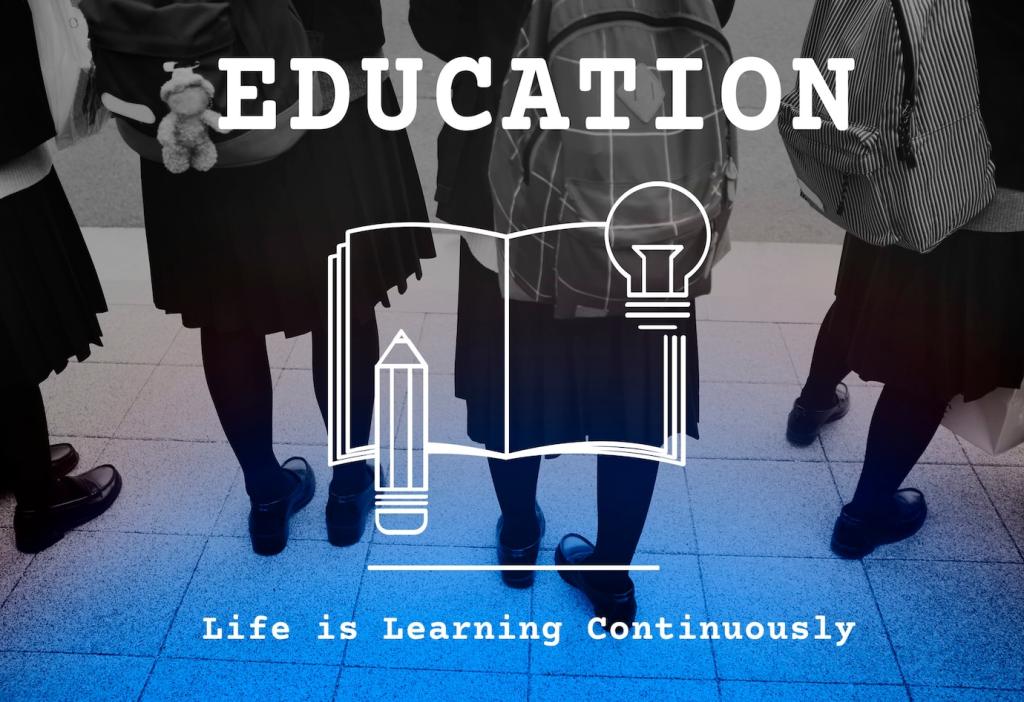Integrating Feedback into Educational Guide Improvements
Today’s theme is Integrating Feedback into Educational Guide Improvements: a practical, human-centered approach to turning real learner and teacher insights into clearer instructions, richer examples, and guides that grow smarter with every iteration.
A Feedback-to-Improvement Framework
Start by collecting feedback from learners, instructors, and observers, then sift for patterns before acting. Group comments by clarity, relevance, accessibility, and assessment alignment. Decide what to fix now, what to prototype, and what to watch, so improvements stay purposeful and focused.
A Feedback-to-Improvement Framework
Translate feedback into outcomes you can track. Are students completing activities faster, making fewer errors, or reflecting more deeply? Write clear success criteria before revising your guide, so you can measure whether your changes actually improved learning experiences in authentic contexts.

Gathering Actionable Feedback
01
Ask Targeted Questions
Replace vague prompts with questions that expose friction. Try, “Where did you slow down?” or “Which step felt ambiguous?” Include one request for an example rewrite, so your future revision benefits from precise, context-rich learner language.
02
Blend Quantitative and Qualitative Inputs
Use quick Likert items to spot hotspots, then pair them with open responses for nuance. Analytics can flag a confusing section, while a short audio note explains why. Together, they tell you both where and how to improve your guide.
03
Create Psychological Safety
Make it safe to critique the guide, not the learner. Remind contributors that feedback guides improvements, not grades. Offer anonymous options, celebrate thoughtful critique, and highlight examples where past feedback led to a concrete, appreciated upgrade.


From Insights to Revisions
Before editing, state a short hypothesis: “If we add a worked example and a checklist, then students will complete the lab with fewer errors.” This clarifies intent, guides revisions, and sets the stage for meaningful evaluation after publication.
From Insights to Revisions
Pilot revised sections with a small group. Try side-by-side versions, gather reflections, and compare outcomes. Keep what works, refine what almost works, and retire what confuses. Invite participants to subscribe for early access to future prototypes.

Designing for Clarity and Accessibility
When learners say examples feel abstract, add multiple representations: annotated screenshots, short videos with captions, and plain-language summaries. Feedback about pace can inspire chunking content into smaller steps with progress markers and quick checks for understanding.
Designing for Clarity and Accessibility
If readers report feeling excluded by jargon, translate terms, show diverse contexts, and offer glossaries. A warm, respectful tone lowers anxiety and boosts engagement. Ask readers to suggest phrases that feel friendlier without diluting academic rigor.
Real Stories of Iteration
The Lab Manual That Finally Clicked
An instructor noticed repeated spills during a titration activity. Student feedback revealed a confusing diagram orientation. After rotating images, adding arrows, and clarifying measurement steps, errors dropped sharply, and completion time decreased without cutting conceptual understanding.
Student-Led Clarifications
A study group recorded voice notes describing where they got stuck in a statistics guide. Their phrasing shaped a new explanation and a color-coded flowchart. The next cohort reported higher confidence, and peer tutors said sessions shifted from confusion to application.
Co-Authoring with Teachers
A district formed a quarterly feedback council. Teachers flagged assessment misalignment with practice tasks. Editors rebuilt the sequence and added exemplars. Pass rates rose, and teachers subscribed to early drafts, eager to keep refining with their classroom-tested insights.


Sustaining a Feedback Culture
Schedule monthly micro-reviews and a semester deep dive. Share a simple agenda: what worked, what wobbled, what we will try next. Consistency makes feedback habitual, lowers the barrier to contributing, and keeps guides aligned with evolving needs.
Sustaining a Feedback Culture
Publicly thank reviewers in release notes, offer badges, or invite them to co-author spotlights. Recognition encourages thoughtful, ongoing feedback and shows that real people shape improvements. Ask readers to join the contributor list and receive early update drafts.
